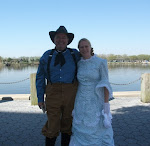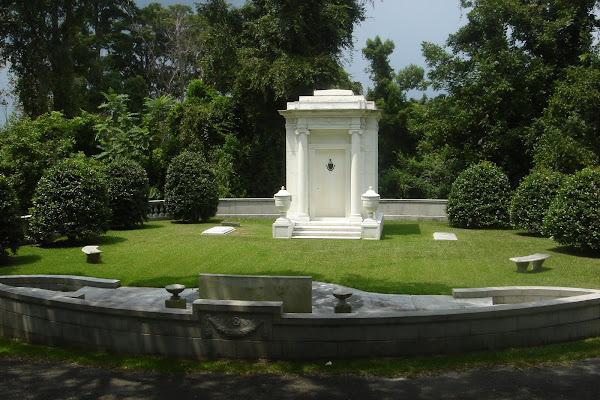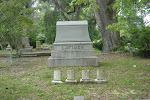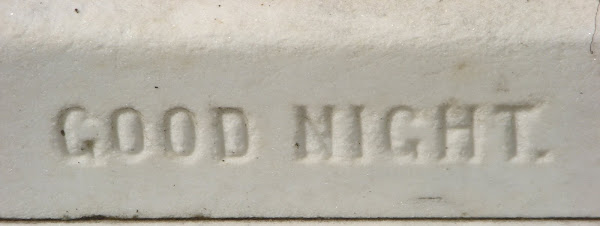
<!--[if !vml]-->  <!--[endif]-->
The "Rebel
Rose" of the Civil War. "I employed every capacity with which God
has endowed me, and the result was far more successful than my hopes could
have flattered me to expect." Rose O'Neal Greenhow. She was born Maria
Rosetta O’Neale in Montgomery County, Maryland to John
O'Neale and Eliza Henrietta Hamilton and was orphaned as a child. When she
was a teenager, she was invited to live with her aunt who ran the exclusive
Congressional Boarding House in Washington, D.C. and was introduced to important figures in the Washington area.
O’Neale was considered beautiful, educated, loyal, compassionate, and
refined. Many were surprised when she accepted the marriage proposal of Dr.
Robert Greenhow, a quiet physician and historian, who worked in the U.S. State
Department and married him on Tuesday, May 27, 1835. Their marriage record
lists her as Miss Rose Mariea O’Neale. Through her husband, she came to meet
the leading southern politicians of the day, including Jefferson Davis, who
was to become the first and only president of the Confederate States of America.
The
Greenhows had four daughters: Florence,
Gertrude, Leila, and little Rose. Dr. Greenhow died in 1854, soon after
little Rose's birth. As the country moved toward war, Greenhow continued to
host parties for both southern and northern politicians, but she made her
views clear, that she was a southerner first, last, and always. A young
lieutenant from Virginia named Thomas Jordan knew that Greenhow was probably
the best-placed southerner in Washington and, after meeting with her, he
proposed that she spy for the Confederacy, acting on behalf of Gen.
Beauregard and she accepted. On July 9 and 16, 1861, Greenhow passed on
secret messages to Confederate General Pierre G. T. Beauregard containing
critical information regarding the 1st Bull Run (known in the South as the
Battle of Manassas) campaign of Union General Irvin McDowel.

Confederate
President Jefferson Davis credited Greenhow's information with securing
victory at Manassas
for the South. On August 11, 1861, she was able to send a report several
pages long, detailing the complete Washington
defense system. Every fort in the Washington area was described in detail,
along with the number of guns, their caliber and range; weak spots in the
earthworks; regiments identified by state origin and their strengths; the
level of troop morale; number of officers and their experience; the political
beliefs of the officers; the number of muskets issued to each regiment and
the number of shots and grape issued for each weapon; the number of mules for
freight-hauling available and the condition of the animals; itemized lists of
wagons, ambulances and stores for each fort.
This was the kind of information
she delivered. She was arrested as a spy by Allan Pinkerton on August 23,
1861. Mrs. Greenhow was kept a prisoner in her home, which had been labeled
"a clearing house for spies." Her home was officially made her
prison by government decree on August 30, 1861. When guards discovered a Confederate
plot to free Greenhow, the government acted, ordering her and her daughter,
"Little Rose" transferred to the Old Capitol Prison on January 18,
1862. For five months, she and her daughter remained at the Old Capitol
Prison, however, even her imprisonment did not deter her from continuing to
provide information to Southern loyalists. This prompted Federal authorities
to banish her south.
On
June 2, the New York Times recorded her release and removal under close
custody. On June 6, 1862, she and her daughter arrived in Richmond to wildly cheering crowds. Asked
by the government to act as a courier to Confederate diplomats, she assumed
the role of blockade runner and traveled to England
and France.
In September 1864, she boarded a blockade-runner, the Condor, bound for North Carolina. Spied
by a Union gunboat in the waters just off the coast near Wilmington,
North Carolina, the Condor raced ahead up
the Cape Fear River hoping to avoid
confrontation. Instead, the Condor ran aground on a sandbar. Desperate to
escape, Greenhow boarded a lifeboat that capsized in the rough water and
drowned.
In
the afternoon of Saturday, October 1, 1864, her body was carried in a long
funeral procession through the streets of Wilmington, a guard of honor accompanying
her horse-drawn casket which was draped with a huge Confederate flag.
Thousands of soldiers marched behind it, led by Admiral Hampden and many
other Confederate officers, to Oakdale
Cemetery. A squad of
Confederate soldiers fired their muskets over her grave as the guns of Fort Fisher
boomed in her honor.
Note: A great white stone was later placed above her
grave, purchased by the Ladies Memorial Association of Wilmington. On it bears the legend:
"This monument commemorates the deeds of Mrs. Rose Greenhow, a bearer of
dispatches to the Confederate government. She was drowned off Fort Fisher
from the blockade runner ‘Condor' while attempting to run the blockade on
September 30, 1864. Her body was washed ashore at Fort
Fisher Beach
and brought to Wilmington."
|






























